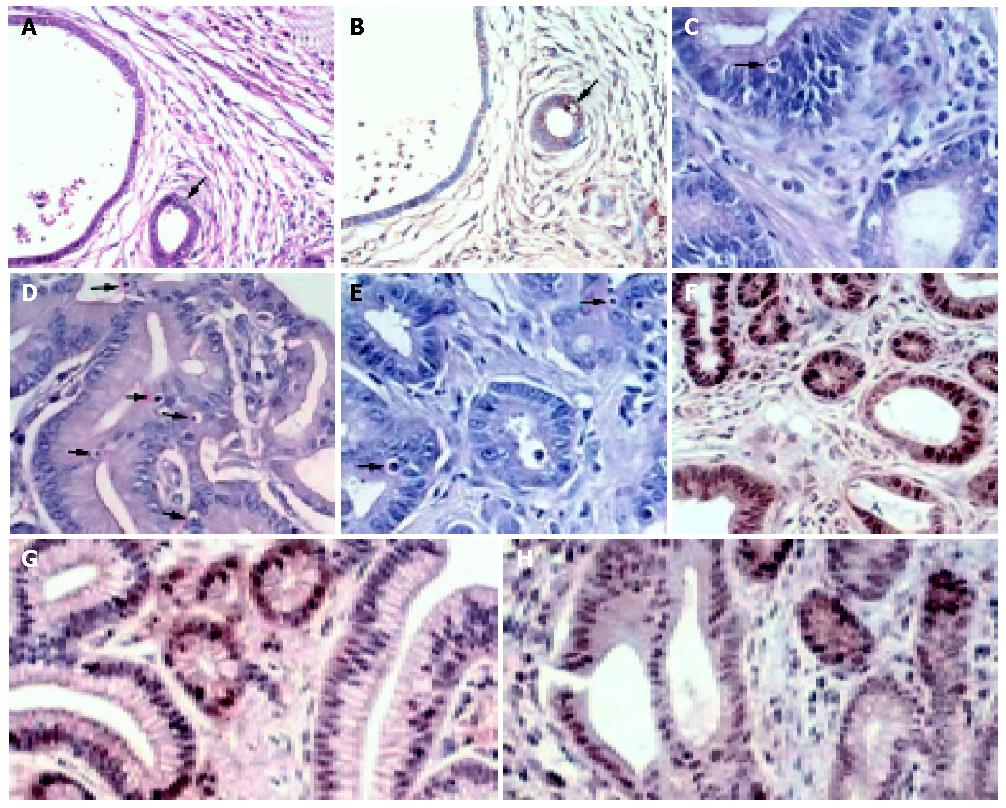Copyright
©2005 Baishideng Publishing Group Inc.
World J Gastroenterol. Jan 7, 2005; 11(1): 41-45
Published online Jan 7, 2005. doi: 10.3748/wjg.v11.i1.41
Published online Jan 7, 2005. doi: 10.3748/wjg.v11.i1.41
Figure 1 Histological examination of apoptosis and proliferation.
Apoptosis was examined by apoptotic nuclei counting (A) and verified by TUNEL (B). A representative apoptotic nucleus is illustrated by the black arrow. Representative H&E stained sections showing apoptotic bodies (red arrow) in (C) MNNG-treated tumors, (D) celecoxib-treated tumors and (E) indomethacin-treated tumors. (F-H) Ki-67 immunostaining was used in the assessment of proliferation. Representative proliferating cells in (F) MNNG treated tumors, (G) celecoxib-treated tumors and (H) indomethacin-treated tumors indicated by positive immunoreactivity against Ki-67.
- Citation: Yu J, Tang BD, Leung WK, To KF, Bai AH, Zeng ZR, Ma PK, Go MY, Hu PJ, Sung JJ. Different cell kinetic changes in rat stomach cancer after treatment with celecoxib or indomethacin: Implications on chemoprevention. World J Gastroenterol 2005; 11(1): 41-45
- URL: https://www.wjgnet.com/1007-9327/full/v11/i1/41.htm
- DOI: https://dx.doi.org/10.3748/wjg.v11.i1.41









